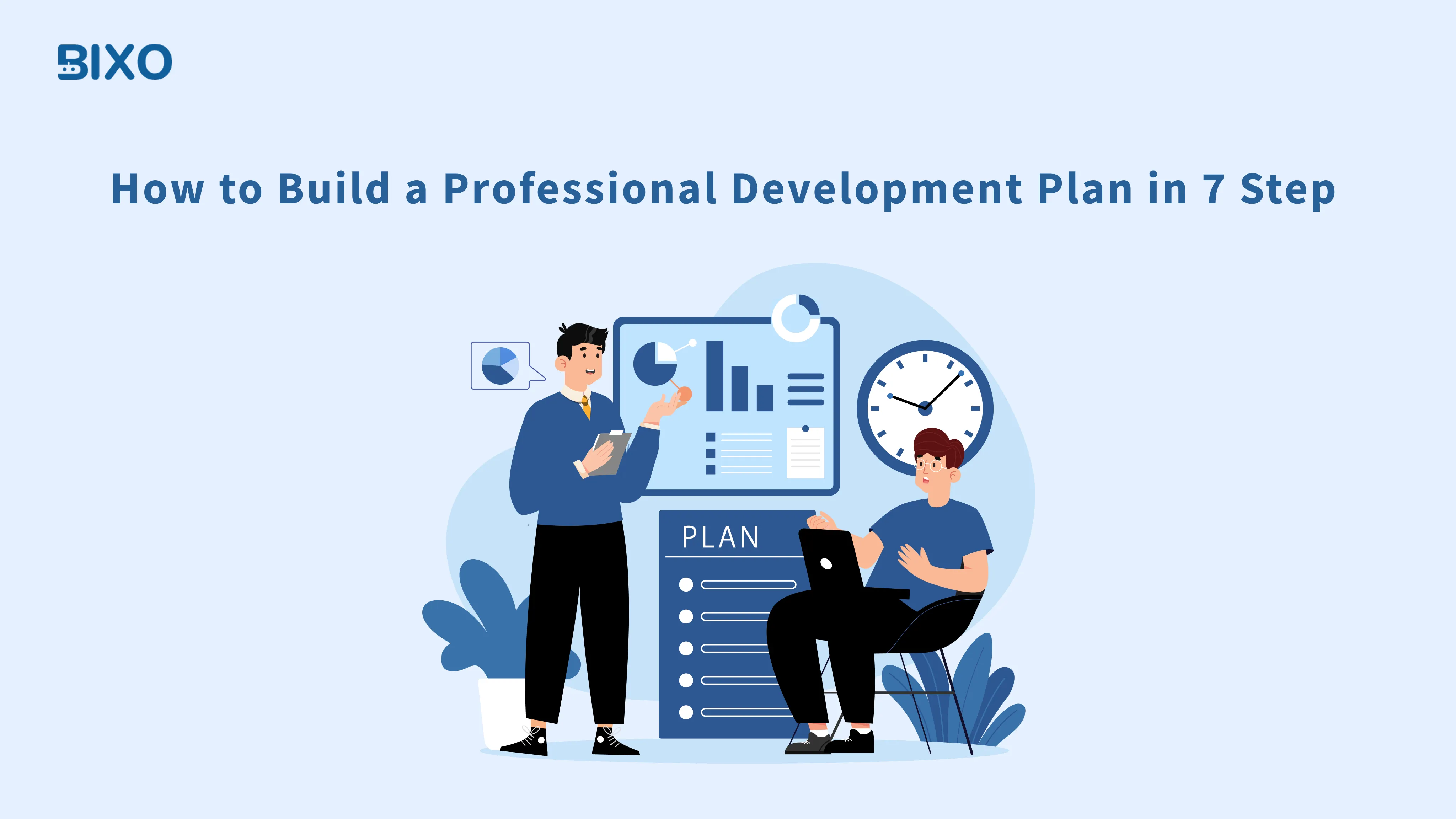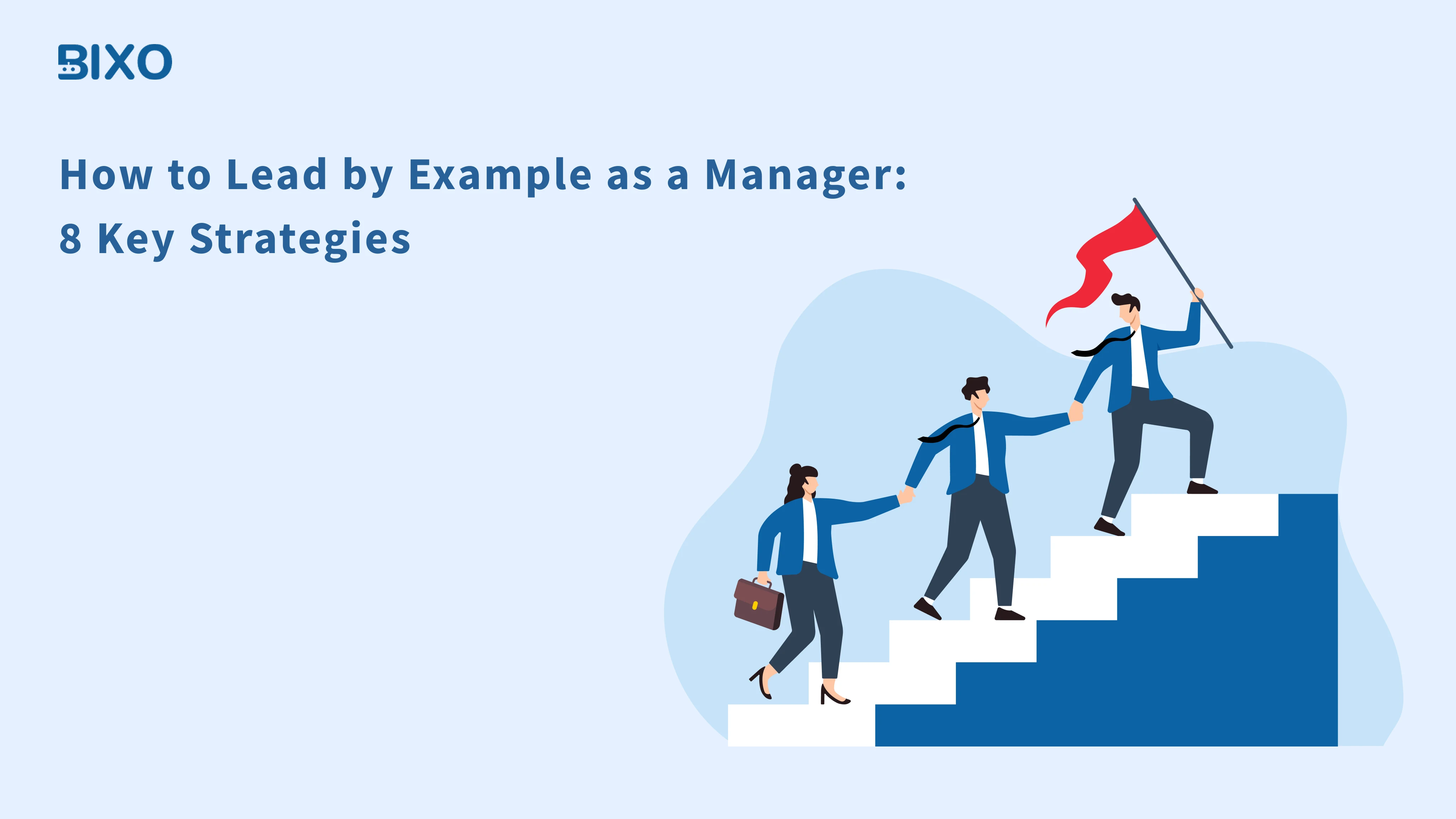
Table of Content
Focus on what matters. BIXO handles the rest!

A professional development plan is your personal career roadmap. It helps you understand where you are now, where you want to go, and how to get there. It is not something you create once and forget. It grows and changes with you over time. Today, most people do not stay in one job forever, and with so many career options, it is easy to feel lost.
Having a clear development plan can help you take control of your career and make confident decisions about your next steps. In this blog, you’ll learn how to create a development plan that works for you and helps you achieve your career goals.
What Is a Professional Development Plan (PDP) and Why Is It Important?
A professional development plan isn’t just a checklist or a document you make once and forget. It’s a way to take control of your career and grow step by step. Instead of waiting for the perfect moment, your plan helps you take action and move forward with confidence. Instead of waiting for opportunities to come to you, a good plan helps you create them.
Why is it important? Because careers aren’t as straightforward as they used to be. Things change quickly, and it’s easy to feel confused. A PDP helps you stay focused and gives you clear steps to follow. It also helps to discuss your project goals and receive guidance from your project manager or mentor. Briefly, it turns big career dreams into a plan you can actually follow.
What Are the 7 Steps to Design Your Professional Development Plan?
Creating a professional development plan isn’t complicated. It just takes a few clear steps to help you grow in the right direction.
These 7 steps will guide you to build a plan that works for you.

Self-Assess Your Skills
Start by taking a step back and looking at where you are right now. What are you good at? What do you enjoy? What areas need a little work?
Self-assessment is the first and most important step in your development plan. It helps you to understand your strength, your passion or skill that you want to develop. Not sure where to begin? Give a quick personality or career test a try, like Myers-Briggs or the Big Five. They can give you helpful insights into your working style and goals.
Set Clear Development Goals
Once you understand where you currently stand, the next step is to figure out how you want to grow. Reflect on what truly matters to your career journey. It could be improving your team communication skills, taking on more responsibility in your role, or gaining deeper expertise in your field. The key is to set goals that truly matter to you and help you grow, not just the ones that sound good.
Identify Skill Gaps
After setting your goals, take a close look at the skills and experience you already have and the ones you need to develop. Are there areas where you could improve, or new skills you’ll need to learn? Understanding these gaps helps you focus your efforts, build the right expertise, and get closer to your career goals.
Find Learning Opportunities
Now that you know the skill set required, it’s time to start building it. Learning isn’t always going back to school; it might be watching a short video, attending a workshop, or following someone in your office. Choose options that fit your leadership style and schedule. No matter if it’s online courses, books or hands-on experience, it’s all about learning to grow without feeling overwhelmed.
Build an Action Plan
Learning what to do is one thing, actually doing it is another. That’s where an action plan comes in. It assists you in breaking down large goals into smaller, achievable tasks so you don’t get stuck or lost. Treat it like a personal checklist. Begin with one small step, decide when to complete it, and list the tools or people that can support you.
Monitor Your Progress
Monitoring your progress makes you feel motivated and gives you a way to visualise your progress. When you do not keep in touch with yourself, it’s easy to lose momentum. You don’t need a complicated system; just set small check-in points. Maybe once a month, review your goals to see how far you’ve come and make changes if needed.
Review and Update Your Plan
Your career will keep changing, and your development plan should change with it. It's not something you set once and forget. Check on yourself every few months. Do your goals continue to mean anything to you? Have interests changed, or have you learned something new, which might lead to a new direction? Adjust your plan so it always fits where you are and where you want to go.
Professional Development Plan vs Personal Development Plan
A professional development plan is all about your career journey. It helps you figure out what skills you need, what steps to take, and how to reach your work goals. It’s practical and focused on what will help you succeed in your job or move up the ladder.
A personal development plan, however, is related to your personal development as a whole. It covers things like building confidence, managing your time better, or improving your health and wellbeing insights. These personal skills often make a big difference in how you perform at work and how happy you feel day to day.
In short, while a professional development plan focuses on your career, a personal development plan supports your life as a whole, and together, they help you become your best self.
What Are the Key Benefits of Having a Professional Development Plan?
A professional development plan gives employees clear direction, keeps them motivated, aligns their skills with business management needs, and encourages them to stay for the long term. It also makes tracking performance much easier.
These are the key benefits that help both employees and the organisation grow together.

Clear Direction for Growth
Without a project plan, it’s easy to feel unsure about your next steps. A professional development plan shows what skills to learn, experiences to gain, or roles to aim for. It keeps you focused, reduces work stress, and gives you confidence to move forward.
Stronger Employee Engagement
When your team knows you care about their growth, they become more motivated. It’s not just about money or benefits. What really matters is that the work they do today is helping them move toward something better tomorrow. A professional development plan keeps that connection and team communication clear also helps turn everyday tasks into real progress toward your goals.
Better Skill Alignment
Random training doesn’t help much. A clear development plan makes sure your team learns what they actually need. Maybe it’s better data skills, stronger communication, or understanding how other departments work. A professional development plan connects learning to real needs and future roles. You’re not guessing. You’re training with purpose.
Reduces Turnover
If people feel stuck, they’ll start looking for other jobs, often without saying a word. But when they see a clear path to grow, they’re more likely to stay and build their future with you. A professional development plan shows that you care not just about what they’re doing now, but also about where they’re going next. That kind of support builds trust and helps you keep good people for the long run.
Easier Performance Tracking
Most performance reviews become unclear pretty quickly. But if you’ve already set clear learning goals or progress points, it’s easier to review someone’s work fairly. You’re not guessing or relying on memory. You’re looking at real results. A development plan helps keep feedback based on facts, not opinions.
Turn Development Goals into Real Progress with BIXO
Every employee deserves a clear path to growth, and every manager deserves the right tools to make that journey easier. BIXO your AI manager assistant bridges that gap by turning professional development plans into trackable, actionable outcomes.
It keeps your team accountable, reminds them of upcoming project milestones, and shows you how each goal contributes to overall success. With BIXO , growth becomes a shared experience, one that builds stronger teams and more confident leaders.

Conclusion
A good professional development plan helps every person and team grow together. It supports learning, builds confidence, and connects personal goals with the success of the organisation. When managers guide their teams with clear communication and steady support, professional development becomes part of everyday work. With BIXO , you can easily manage task, follow progress, and keep your team motivated to reach new milestones. Help your people grow, lead teams with confidence, and let BIXO make development easier for everyone.
FAQs
Check in with your plan every few months or after any big change at work. Your goals might shift over time, and that’s okay.
That’s totally normal. Start by exploring what you enjoy, your strengths, and areas you’d like to grow. You don’t need all the answers, just a direction.
It does not need to be long and formal. Even a single-page plan with a good intention and steps is sufficient to start with.
Of course. Your PDP is for you. But if it feels comfortable, sharing with a manager or mentor can encourage you to stay on track.
Get a demo of BIXO
Recommended Blogs

10 Types of Leadership Styles: Which One Defines You Best?
Learn 10 common leadership styles in a simple way, identify which suits you best, and learn how to grow into a more effective team leader.
 Jahnavi Chintakrindhi |
Jahnavi Chintakrindhi |
 Oct 17, 2025
Oct 17, 2025


